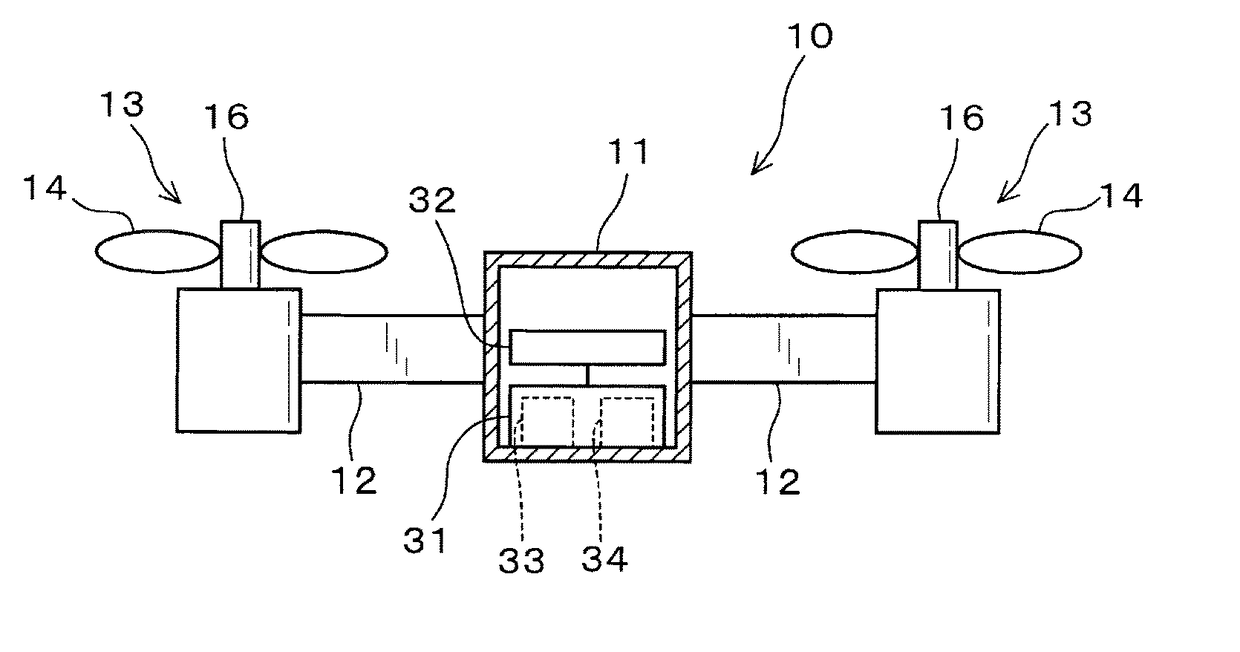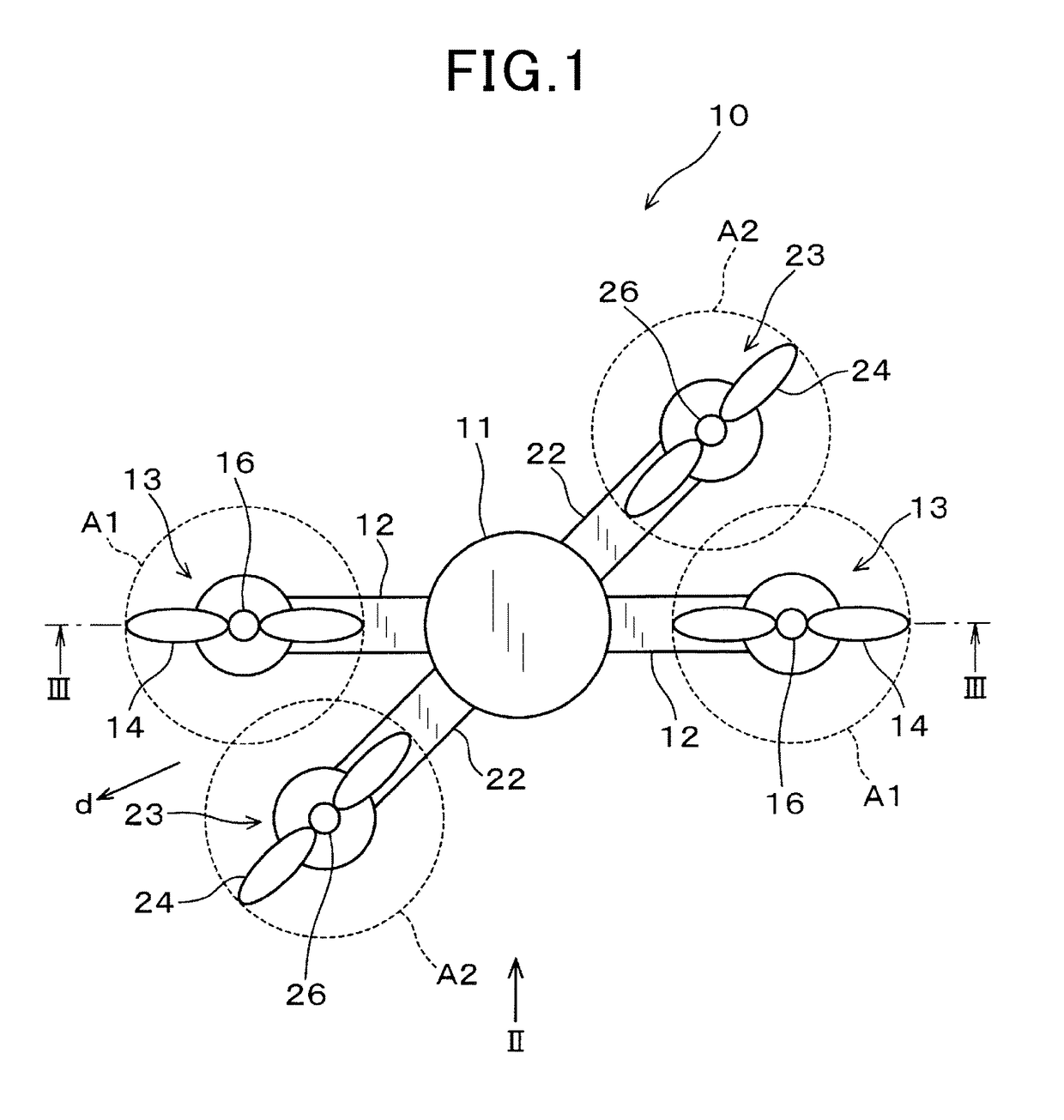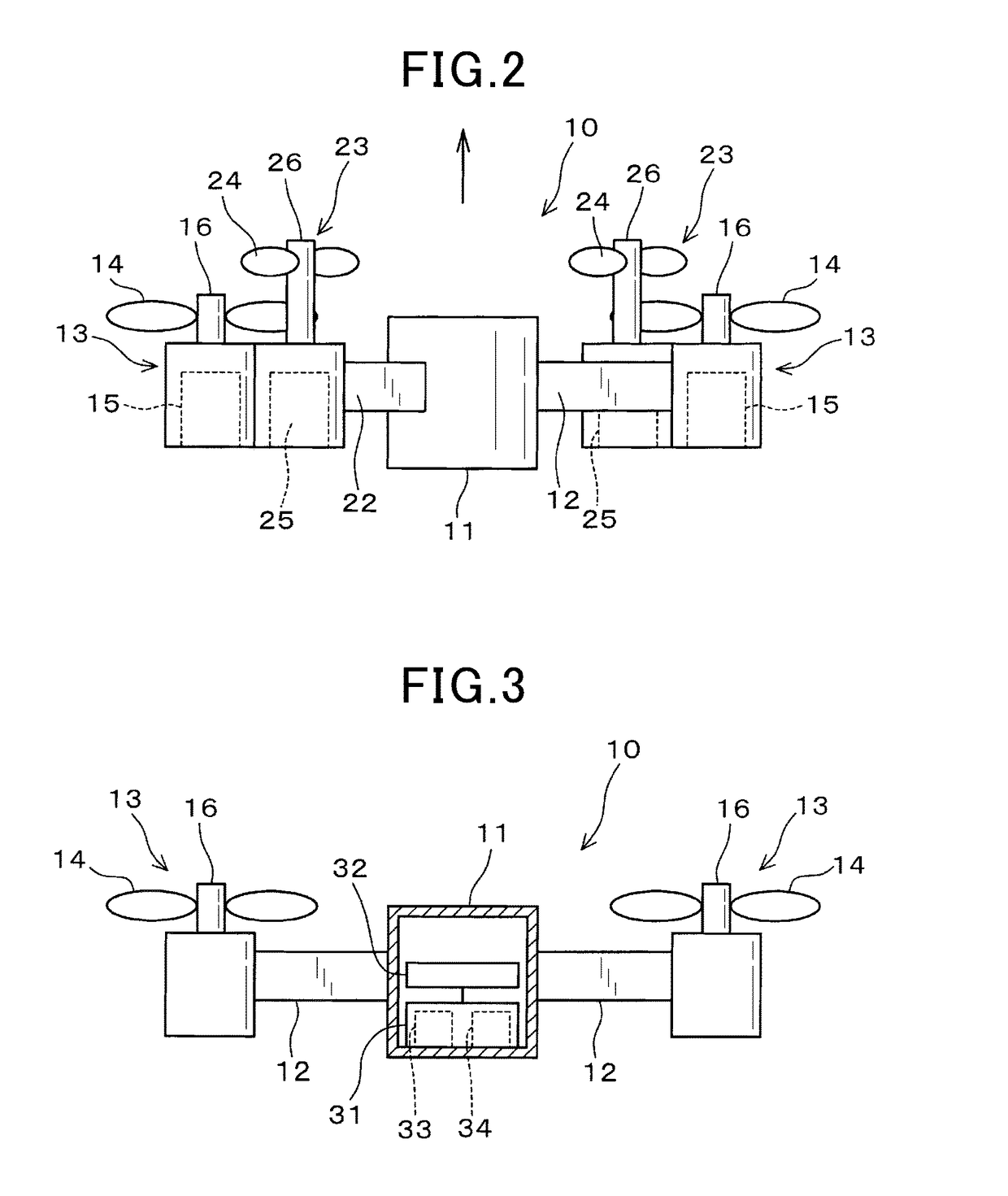Aerial vehicle
- Summary
- Abstract
- Description
- Claims
- Application Information
AI Technical Summary
Benefits of technology
Problems solved by technology
Method used
Image
Examples
first embodiment
[0023]The aerial vehicle 10, as illustrated in FIGS. 1 to 3, includes the vehicle body 11, the first arms 12, the first thrusters 13, and the first propellers 14. The vehicle body 11 is located at the center of gravity of the aerial vehicle 10. The first arms 12 radially extend from the vehicle body 11 to be symmetrical about the vehicle body 11. The first arms 12 are provided as a pair on the vehicle body 11. Each of the first thrusters 13 is secured to one end of a corresponding one of the first arms 12 which is opposite the other end to which the vehicle body 11 is joined. The first propellers 14 rotate on the first thrusters 13 to produce propulsive power of the aerial vehicle 10. The first thrusters 13 each have the motor 15 as a drive source to rotate the first propeller 14. The torque, as produced by each of the motors 15, is transmitted to one of the first propellers 14 through the first shaft 16.
[0024]The aerial vehicle 10 also includes the second arms 22, the second thrust...
second embodiment
[0030]FIG. 5 shows the aerial vehicle 10 according to the second embodiment.
[0031]The aerial vehicle 10 is equipped with the drive unit 41. The drive unit 41 is installed inside the vehicle body 11. The drive unit 41 works as an actuator to swivel the first arms 12 and the second arms 22 relative to each other around the yaw axis. Specifically, the drive unit 41 rotates the first arms 12 and the second arms 22 relative to each other in a range from an angular position where the angle which the each of the first arms 12 makes with one of the second arms 22, as indicated by broken lines in FIG. 5, is 90° to an angular position where the each of the first arms 12 makes with one of the second arms 22, as indicated by solid lines in FIG. 5, is less than 90°. The drive unit 41 in the second embodiment is designed to swivel only the second arms 22 about the yaw axis.
[0032]When the first arms 12 and the second arms 22 are oriented so as to be at 90° to each other, and the vehicle body 11 is...
third embodiment
[0034]FIG. 6 shows the aerial vehicle 10 according to the third embodiment.
[0035]The vehicle body 11 is made up of two discrete parts: the first body 51 and the second body 52 which are joined together at the center of a length of the vehicle body 11 extending in the yaw axis of the aerial vehicle 10. The first body 51 has secured thereto the first arms 12 on which the first thrusters 13 are disposed. The second body 52 has secured thereto the second arms 22 on which the second thrusters 23 are mounted. The first body 51 and the second body 52 are rotatable relative to each other at the center of the vehicle body 11 in the lengthwise direction (i.e., the direction of the yaw axis) to orient the first thrusters 12 secured to the first arms 12 and the second thrusters 23 secured to the second arms 22 to be arranged out of alignment with each other in the direction of the yaw axis. Accordingly, the plane including the rotating region A1 of each of the first propellers 14 is, like in th...
PUM
 Login to View More
Login to View More Abstract
Description
Claims
Application Information
 Login to View More
Login to View More - R&D
- Intellectual Property
- Life Sciences
- Materials
- Tech Scout
- Unparalleled Data Quality
- Higher Quality Content
- 60% Fewer Hallucinations
Browse by: Latest US Patents, China's latest patents, Technical Efficacy Thesaurus, Application Domain, Technology Topic, Popular Technical Reports.
© 2025 PatSnap. All rights reserved.Legal|Privacy policy|Modern Slavery Act Transparency Statement|Sitemap|About US| Contact US: help@patsnap.com



